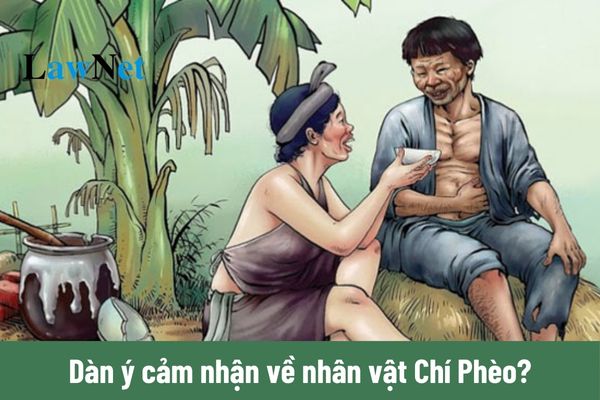What are sample outlines for expressing feelings about the character Chí Phèo for grade 11 students in Vietnam? How long is the Grade 11 Literature program in Vietnam?
What are sample outlines for expressing feelings about the character Chí Phèo for grade 11 students in Vietnam?
Students can refer to the following sample outline for expressing feelings about the character Chí Phèo for grade 11 students:
1. Introduction
- Nam Cao is an outstanding critical realist writer of Vietnamese literature.
- His works speak of the small fates in society, especially the peasants.
- Chí Phèo is a work that reflects the image of a peasant before the August Revolution, dehumanized by colonial feudalism.
2. Body
(1) Chí Phèo, the honest peasant:
- Born as an orphan, abandoned, living an aimless life.
- Grew up working as a farmer for Ba Kien, healthy, hardworking, and “gentle as earth.”
- Had simple dreams and happiness.
- Possessed self-respect.
(2) Chí Phèo, the thug, the demon of Vu Dai village
- Was pushed into a colonial prison by Ba Kien.
- The honest peasant was dehumanized both physically and morally by the prison.
=> Chí Phèo is a phenomenon representing the societal norms of the time, a product of the oppression and suppression in the countryside before the August Revolution.
(3) Chí Phèo, the tragedy of one born human but not allowed to be human
- The encounter with Thị Nở awakened the humanity in Chí.
- Chí awakens, yearning to live honestly, to return to ordinary life, and to fulfill simple dreams. The manifestation of awakening is Chí realizing his age, recognizing the everyday sounds of life.
- However, he was denied the right to be human and met a tragic end when Thi, heeding her aunt’s advice, refused to live with Chí. The aunt represents societal barriers, the voice of social prejudice of the time, leading Chí to the extreme depths of pain and despair.
- Chí’s tragic end: In desperation, Chí realizes that the one who took away his face and soul was Ba Kien. Chí sought revenge, exterminated Ba Kien, and ended his own life.
(4) Evaluation
- Artistry: Multi-layered narrative voice, unique character depiction, compelling and logical story situations.
- Content: Through the character Chí Phèo, Nam Cao demonstrated a new humanitarian and realistic value. He exposed the crimes of colonial feudalism while expressing faith in the strength of human connection, in human nature, and human essence.
3. Conclusion
- Chí Phèo has become an emblematic figure of the peasantry before the August Revolution in Vietnamese critical realist literature.
- The realistic and humanitarian values manifested through the character Chí Phèo have elevated the work to the foremost masterpiece of Nam Cao, affirming his name in Vietnamese literature.
(Note: Information is for reference only)

What are sample outlines for expressing feelings about the character Chí Phèo for grade 11 students in Vietnam? (Image from the Internet)
How long is the Grade 11 Literature program in Vietnam?
Based on Subsection 2, Section 6 of the Literature Education Program issued with Circular 32/2018/TT-BGDDT, the duration of grade 11 Literature is stipulated as follows:
| Grade 1 | Grade 2 | Grade 3 | Grade 4 | Grade 5 | Grade 6 | Grade 7 | Grade 8 | Grade 9 | Grade 10 | Grade 11 | Grade 12 |
| 420 | 350 | 245 | 245 | 245 | 140 | 140 | 140 | 140 | 105 | 105 | 105 |
At the upper secondary school level, each grade adds 35 lessons for specialized studies.
Thus, the grade 11 Literature subject has a total of 140 lessons.
What are the objectives of the grade 11 Literature in Vietnam?
Based on Subsection 2, Section 8 of the Literature Education Program issued with Circular 32/2018/TT-BGDDT, the objectives of the grade 11 Literature subject are stipulated as follows:
- Helping students to continue developing the qualities formed at the lower secondary level; expanding and enhancing the requirements for quality development with specific expressions: being resilient, having personality, ideals, and ambitions, preserving and promoting Vietnamese cultural values; having the spirit of integration and a global citizen consciousness.
- Continuing to develop the competencies formed at the lower secondary level with higher achievement requirements: understanding both explicit and implicit content of different text types with increased difficulty shown through volume, content, and reading requirements; comprehending with a demand for developing critical thinking; applying knowledge about literary language characteristics, literary trends - movements, author styles, works, internal and external textual elements to form independent reading competence.
- Proficiently writing argumentative and comprehensive exposition texts (combining expressive methods and argumentative operations) correctly, with opinions, ensuring logic and persuasiveness. Speaking and listening flexibly; being able to listen and evaluate both content and form of expression in presentations; knowing how to participate with opinions, personality, and appropriate debating attitude in discussions.
- Developing literary capability with requirements: differentiating literary works from those of other art forms; analyzing and commenting on the characteristics of literary language; differentiating the expressed and the implied in literature; recognizing, analyzing, and appreciating literary works based on literary style features; having a rich imagination, knowing how to enjoy, receive, and evaluate literature; creating some products with literary value.

